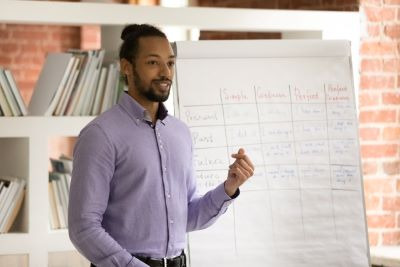You are here
Understanding Roles and Processes within Higher Education

Module 5: Advocating for Inclusion and Justice*
From Ways to Incorporate DEI into Your Courses By David Luke, Chief Diversity Officer, University of Michigan, Flint
Understanding Roles and Processes within Higher Education
I often think about how change processes work in organizations, especially in higher education. When advocating for justice, we all have different roles in a university or college setting. For me, the nature of these roles became most apparent when I began working at a university cultural center. I spoke with my colleague at the time about doing a program that took an overtly politicized position. My colleague stated that while they agreed with the position, in order to protect the center, we would need to approach the topic in a different way.

In conversations I have had with impassioned students, we’ve discussed similar matters. Students have historically pushed universities to improve. They possess a unique vantage point and their insights can provide great benefit. Students can advocate by leveraging their collective voices and amplifying through protest and demonstrations as needed.
And while faculty might join in on protests, students often understand that people like me, who occupy staff or administrative roles, will likely be absent at a protest but present in meetings the next day figuring out how to address students’ fundamental concerns. I do my best to be transparent about this situation and manage students’ expectations while conveying my support for their desire to push our institutions to be more just and equitable spaces.
*Published 07/22. © 2022 Sage Publishing. All rights reserved. All other brand and product names are the property of their respective owners.